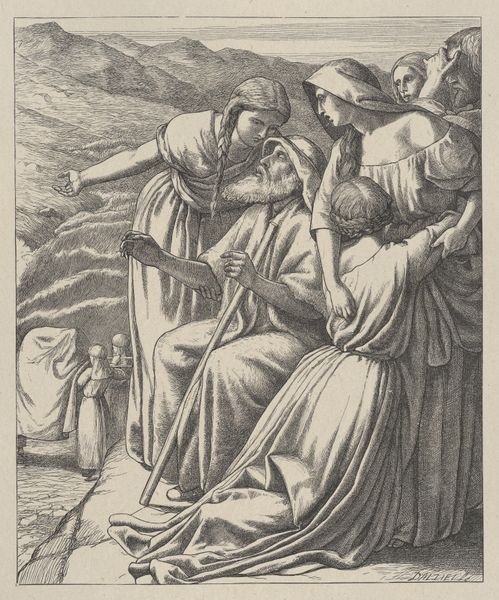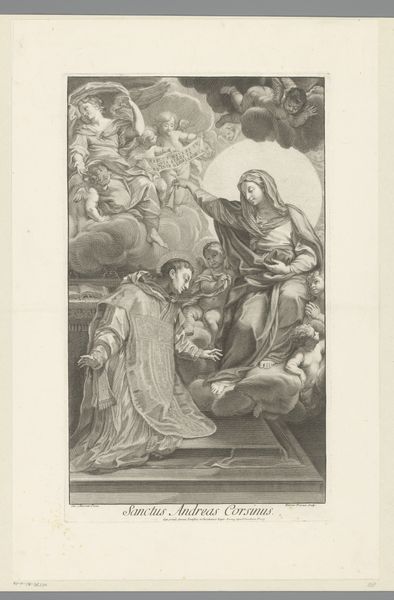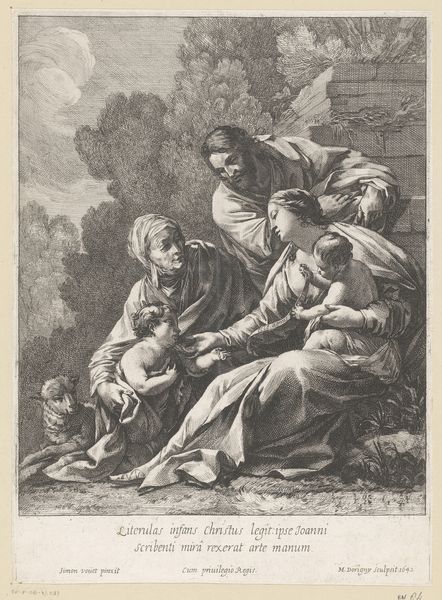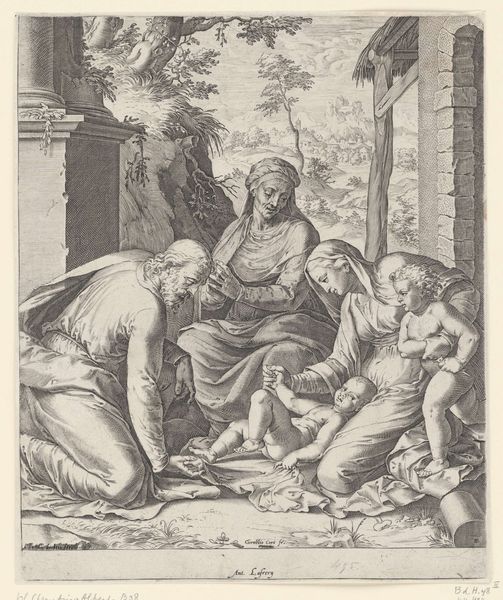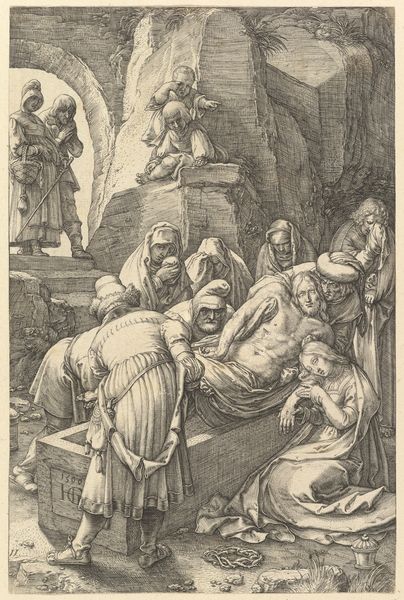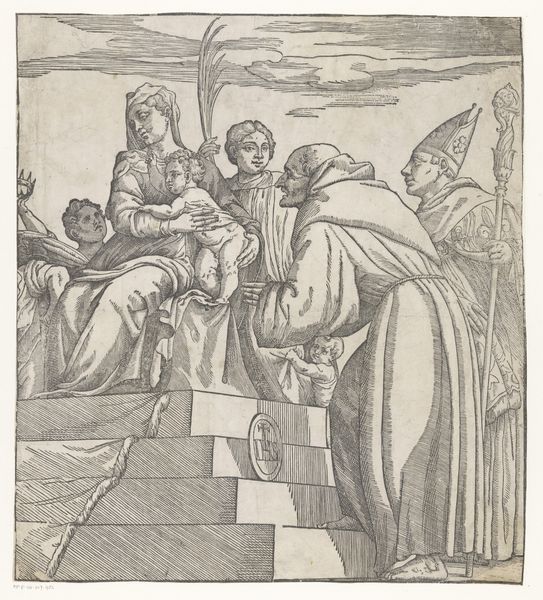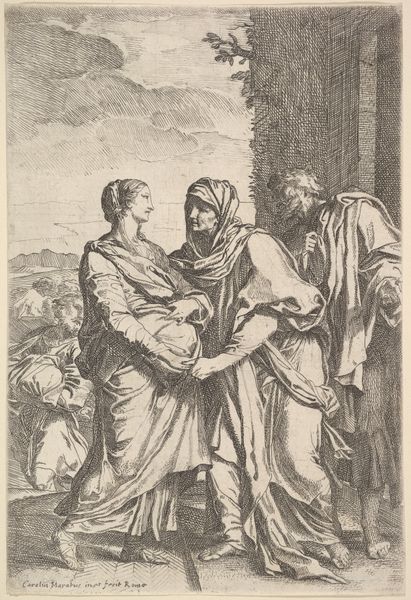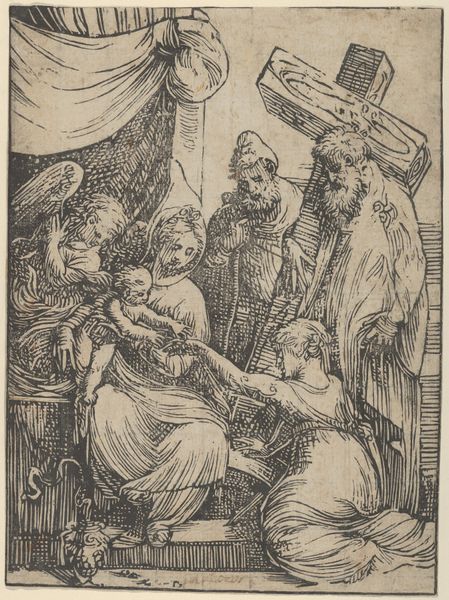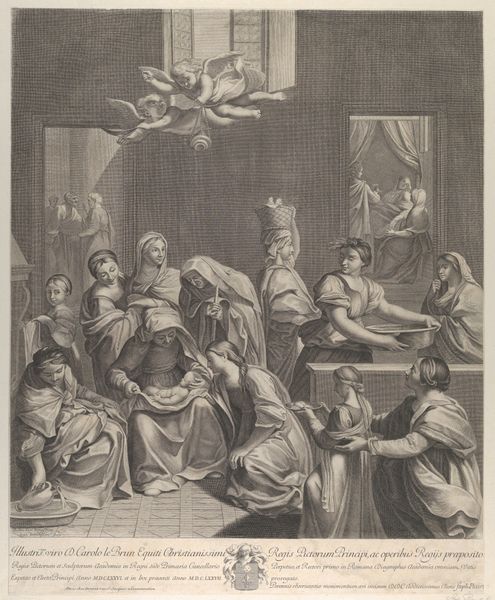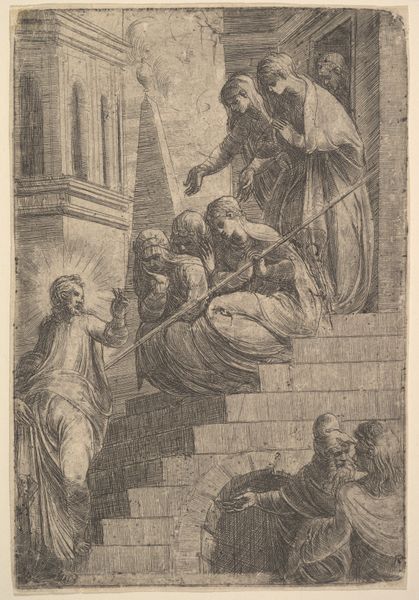
drawing, print, etching, engraving
#
drawing
#
narrative-art
#
baroque
# print
#
etching
#
history-painting
#
engraving
Dimensions: Sheet (Trimmed): 20 1/4 × 12 9/16 in. (51.5 × 31.9 cm)
Copyright: Public Domain
Curator: This is "Plate 1: The Calling of Saint Matthew," a 1678 engraving by Giuseppe Maria Mitelli, currently residing here at The Metropolitan Museum of Art. Editor: It’s captivating; the detailed line work gives it a vibrancy despite its monochrome palette. I am immediately drawn to the almost theatrical gestures of the figures. Curator: Mitelli’s piece beautifully depicts a pivotal moment: the instant Christ calls Matthew, a tax collector, to become one of his apostles. The image bristles with the tension between earthly profession and divine calling. Editor: Yes, that conflict plays out beautifully. Matthew's hunched posture speaks to the weight of his former life, literally counting his coins, compared to Christ's open stance, offering acceptance. Considering the socioeconomic power dynamics inherent in religious conversion, it raises crucial questions about agency and the accessibility of spiritual change. Curator: Absolutely, and beyond the personal narrative, notice the classical architectural elements - particularly the column spiraling upwards. Columns symbolize strength and are often associated with establishment and hierarchy, a society ruled by structure that here is confronted by something transcendent. This engraving operates not simply on the symbolic level, it serves as a mnemonic tool for audiences already familiar with this Biblical episode, offering emotional depth. Editor: Looking closely at these faces—they betray curiosity and judgment; a very human mix. One wonders about the socio-political messages woven into it. Are we meant to see these tax collectors as irredeemable, or can faith genuinely offer paths to emancipation, even from systems of economic oppression? Curator: These layers of interpretation make it endlessly relevant. Mitelli’s brilliance lies not just in illustrating the story but inviting introspection. The viewer must choose what to focus on and assign the relative significance that speaks most to them. Editor: It strikes me how art from centuries past can trigger very present-day debates. Examining works like this is like peeling back history itself, revealing complex roots that underlie today's cultural anxieties and yearnings. Curator: Indeed, these symbolic moments continue to shape our worldviews. Editor: That really gives me a lot to think about; a wonderful look at faith, society and choice. Thank you.
Comments
No comments
Be the first to comment and join the conversation on the ultimate creative platform.
